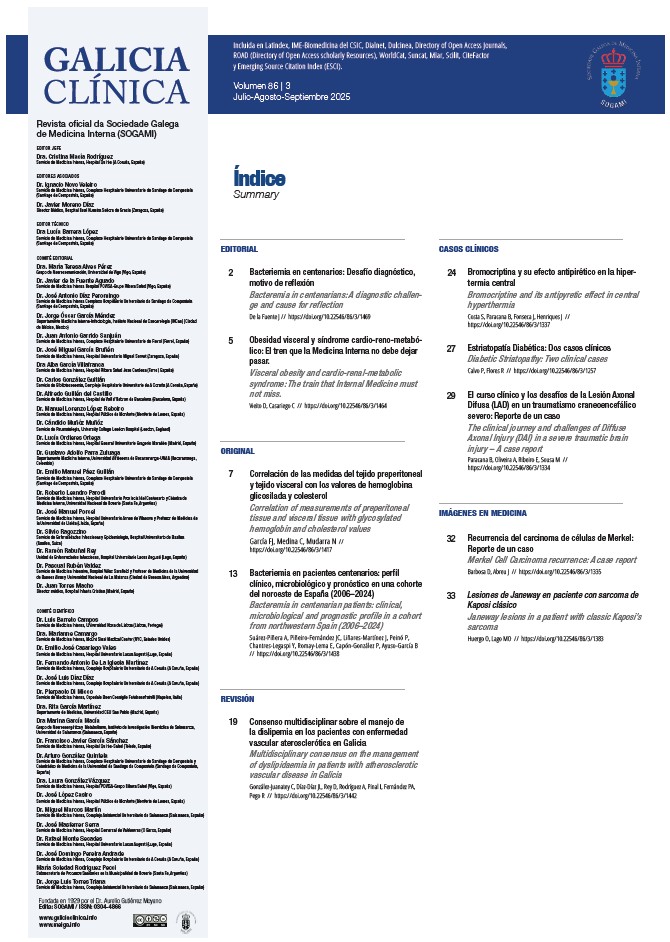Abstract
Objectives: To describe the clinical, microbiological, and prognostic characteristics of bacteremia in centenarian patients.
Material and methods: A retrospective, descriptive study of all episodes of bacteremia in patients aged 100 years or older at Lucus Augusti University Hospital, 2005-2024. A descriptive analysis of the recorded variables was performed, along with a multivariate logstic regression to identify factors associated with mortality.
Results: A total of 29 patients were included, 58.6% were women. The mean age was 101.4 ± 1.7 years, and the median Charlson Comorbidity Index was 4 (IQR 3–4). The most common infection source was urinary (48.3%), and E. coli was the predominant microorganism (51.7%). Atypical presentations were predominant. Antimicrobial resistance was observed in 27,6% of isolates, and 26.6% of patients received inappropriate empirical antibiotic therapy. The mean length of stay was 7.2 ± 5.4 days. Delirium was the most frequent complication (44.8%), and in-hospital mortality was 24.1%. Multivariate analysis showed that a higher qSOFA score at admission was independently associated with mortality (OR 4.6; 95% CI: 1.1–19.2; p=0.039). A total of 45.8% of patients were readmitted, and the median survival after the acute episode was 93 days (IQR 47–464.5).
Conclusions: Bacteremia in centenarian patients is characterized by atypical presentation, clinical severity, and high morbidity and mortality. The most frequent infection source was urinary, predominantly caused by E. coli. These findings highlight the importance of early identification of severe cases, optimization of empirical antimicrobial therapy, and prevention of complications.

This work is licensed under a Creative Commons Attribution-NonCommercial-NoDerivatives 4.0 International License.
Copyright (c) 2025 Galicia Clínica

